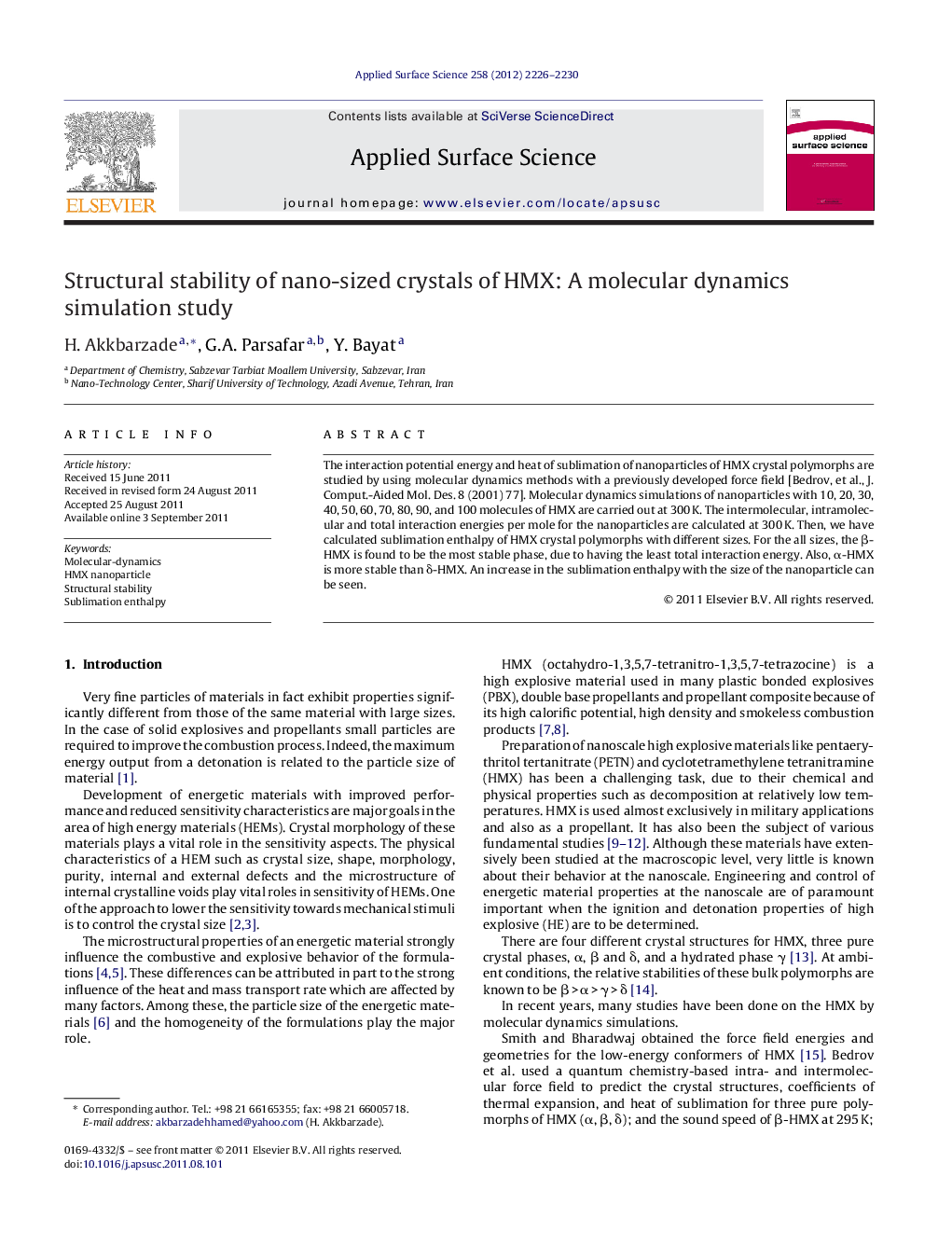| Article ID | Journal | Published Year | Pages | File Type |
|---|---|---|---|---|
| 5366458 | Applied Surface Science | 2012 | 5 Pages |
The interaction potential energy and heat of sublimation of nanoparticles of HMX crystal polymorphs are studied by using molecular dynamics methods with a previously developed force field [Bedrov, et al., J. Comput.-Aided Mol. Des. 8 (2001) 77]. Molecular dynamics simulations of nanoparticles with 10, 20, 30, 40, 50, 60, 70, 80, 90, and 100 molecules of HMX are carried out at 300 K. The intermolecular, intramolecular and total interaction energies per mole for the nanoparticles are calculated at 300 K. Then, we have calculated sublimation enthalpy of HMX crystal polymorphs with different sizes. For the all sizes, the β-HMX is found to be the most stable phase, due to having the least total interaction energy. Also, α-HMX is more stable than δ-HMX. An increase in the sublimation enthalpy with the size of the nanoparticle can be seen.
⺠Molecular dynamics simulations of nanoparticles with 10, 20, 30, 40, 50, 60, 70, 80, 90, and 100 molecules of HMX are carried out at 300 K. ⺠The intermolecular, intramolecular and total interaction energies per mole for the nanoparticles are calculated at 300 K. ⺠For the all sizes, the β-HMX is found to be more stable than α-HMX. ⺠Also, α-HMX is more stable than δ-HMX. An increase in the sublimation enthalpy with the size of the nanoparticle can be seen.
